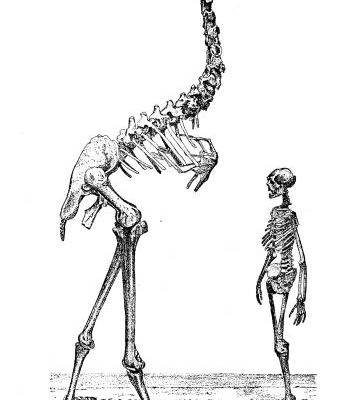Who’s allowed to have an eating disorder?
Eating disorders (EDs) are dangerous mental health disorders in which some form of negative thinking manifests itself into behaviors where someone’s food intake and/or eating habits look different than they normally would. This can include extreme increases or decreases in the amount of food one consumes, changes in what people eat or who they eat around, or forced removal of the food someone consumes (through things like throwing up or laxatives). They can also be accompanied with other new behaviors, such as changes in clothing and style, avoidance of social situations, or excessive exercise. However, not everyone with an eating disorder will experience all or even any of these behaviors, as the most common trait of these disorders is the difficult emotion that someone may feel around eating or situations that involve food.
Though eating disorders are mental disorders characterized by thoughts, emotions, and behaviors that anyone can experience, EDs are often only associated with their physical traits. These traits tend to align with our western interpretation of beauty: female, white, and skinny. EDs are often presented in this light to make them seem more manageable, or even beautiful, to a public that’s been conditioned to care more about white people who fall into the beauty standard. This association with thinness is damaging to a lot of ED sufferers, not only because it excludes many from being represented but because it has expanded outside of media representation into more concrete fields like medicine, as seen by the low weight criteria for disorders like anorexia.
This presentation of EDs only having skinny victims is completely inaccurate. There are many different behaviors that accompany eating disorders and these behaviors have different outcomes for different people. Some people may feel physical effects of their disorder, such as lightheadedness or lethargy. Others will feel mental symptoms like increases in stress or depression. Some EDs, such as binge eating disorder, include symptoms like extreme eating, which can be associated with weight gain. All of these symptoms are ones that people can feel with or without any changes to their bodies and they deserve treatment for these symptoms regardless of the body they are in.
However, not everyone is treated as though they are deserving of this treatment. Many are prevented by fatphobia, which is the idea that originates from western beauty standards that claims that fat people are less deserving of love, care, or even human worth. This is obviously a harmful concept, as weight has no indication of anyone’s life or humanity, but it is incredibly prevalent in American society. This includes the medical and psychiatric community, in which many professionals will prescribe weight loss as a treatment for any almost any problem fat patients bring up. EDs are not exempt from this sad tragedy, as some doctors have even gone as far as to praise ED behaviors when they result in weight loss.
This association with weight is also wrong because many who suffer from an eating disorder do so for many more reasons than those related to body size. In her video, “Why I Don’t Have a Face Reveal,” animation YouTuber Jaiden Animations explains, “My whole day revolved around what I ate, when I ate, how many calories, every detail. I wanted complete control.” Jaiden’s experience reveals how anxiety and a need for control can be one cause of eating disorders. Others are caused by a stigma surrounding certain foods (like the common idea that processed foods are unhealthy) or a feeling that one is not deserving of proper nourishment. These, and many other causes of EDs, can be completely isolated from body image and weight loss, so to present all EDs as being about weight invalidates the experience of many sufferers. This can cause many to think that they are making up their ailments, that they should feel guilty, or, worse case scenario, that they do not deserve help or treatment.
Here lies the real danger of eating disorders being associated with low weights: it is an association that perpetuates the idea that people’s disorders are only valid if they reach a certain low weight, a weight that happens to align with the skinniness that we consider attractive in American society. Depictions of this manner discourage sufferers, especially those in larger bodies, from getting treatment and can even encourage them to continue harmful behaviors. Dr. Jenna Daku, an eating disorder specialist, claims that, “As soon as we turn someone away for treatment because they don’t meet the weight criteria it implies that they are not sick ‘enough’. To a brain riddled with an eating disorder this communicates that they’re not ‘thin enough’ to deserve support.” Daku goes on to explain how this idea of not being thin enough can worsen an ED as it encourages people to make themselves sicker and sicker, hoping this pain will make them someday feel deserving of help and be able to access it.
Some might believe that it’s good to depict eating disorders only in thin bodies or to have weight criteria for diagnoses because this reaches the people who are suffering the most. If people are facing severe weight loss then they seem to be struggling much more than people whose symptoms are less obvious. However, this is false as there are many different dangerous effects of EDs that do not always correlate with weight loss. Additionally, making comparisons about how much people are suffering can be invalidating or imply that people haven’t suffered enough. No one deserves to feel any amount of pain, so to imply that they need to go through more is just hurtful and dangerous.
Approximately 10,200 people die from an eating disorder each year. That’s more than a death an hour. While it would be wrong to attribute these tragedies solely to the association between thinness and eating disorders, it is important not to discount how dangerous this stigma can be. When EDs have this association, people are discouraged from getting help and, in the worst situations, they die. Thankfully, this tragedy is not inevitable. We can all do things within ourselves to fight it. Actions like examining our thought processes when we are thinking of concepts like weight loss and body types are very important. If you find yourself inclined to praise someone for losing weight from a diet, ask yourself what reason you have to praise this action. If you have a critical thought about your own or someone else’s body, try to figure out if that thought is rooted in fatphobia and whether it’s a necessary or even true judgment. When you watch a movie or TV show, examine how fat characters (if there are any) are treated compared to skinny ones. These all may seem like small, internal acts, but the more we can constantly challenge our thoughts at this level at first, the more we may eventually be able to recognize and counter harmful stereotypes and stigmas around weight and eating disorders in more significant ways. Small steps can take us a long way over time as we ultimately strive to help save the lives of those who need and deserve kind, informed treatment for their disorders.









